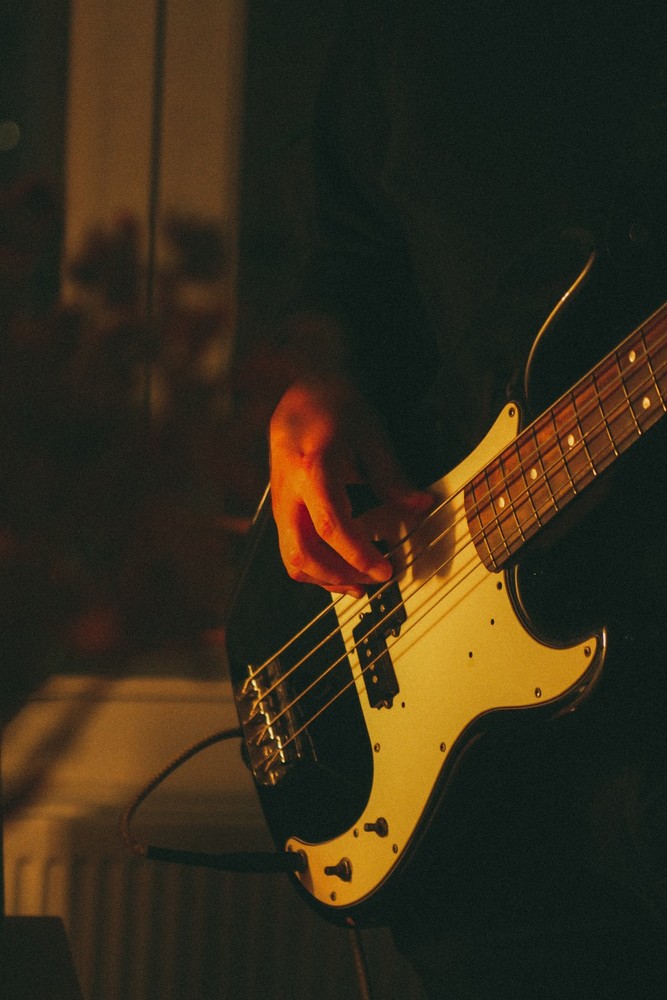
4 Things to Consider When Buying a Bass Guitar for Latin American Music
27 December, 2020Probably many of you have started with a decent acoustic guitar for beginners, however, the bass guitar is an essential instrument in nearly every genre of music. It even takes on a solo function in many genres including metal, rock, funk, jazz, and of course, Latin. The bass is the backbone of a lot of bands and a very rewarding instrument to learn.
Before you can rock out like Latin bass legends Juan Alderete and Oscar Stagnaro, you will need to get your hands on the right equipment.
The best bass guitar won’t be the same for everyone. There are numerous factors you must consider if you want to find your dream instrument, such as the number of strings, tonewoods, fretted or fretless, acoustic or electric, and even whether you might consider a short scale bass.
Check out these 4 things to consider as you’re shopping for your first bass guitar to join your Latin American band.
1) Number of Strings
Most people are familiar with traditional 4-string bass guitars. These instruments are tuned in the standard E-A-D-G format and have much narrower necks than their 5- or 6-string counterparts. For these reasons, 4-string basses are much easier to handle and learn to play on, almost as easy as a ukulele.
However, some genres of music are better suited for 5- or 6-string bass guitars. For example, country and modern worship music commonly have songs rooted in the B note. The 5-stringed bass with its B-E-A-D-G tuning is ideal for performers who enjoy these genres.
For Latin American music, a 4-string will work fine. You can progress to a 5- or 6-string later in your musical journey if you want to learn more genres!
Regardless of genre, 5- and 6-stringed guitars allow for more versatility when playing. If you plan to perform a lot of solos, a 6-stringed bass will let you pull off some creative tricks. This is because it has the most expansive tuning (B-E-A-D-G-C).
2) Tonewoods
The material of your guitar’s tonewood is another important factor to consider. Tonewoods all differ in terms of looks, affordability, and the sounds they produce.
Some of the most common tonewoods you can choose from include:
- Agathis: Agathis is one of the more affordable tonewoods. It produces a rich tone that favors the lower midrange over the upper one.
- Ash and alder: Ash and alder are very similar. They both offer an evenly-balanced tone that is rich in harmonic overtones. Players often choose ash for its beautiful grain, which is especially attractive when paired with a transparent finish.
- Basswood: These tonewoods offer shorter sustain, which is ideal for those who will be experimenting with complex playing techniques.
- Mahogany: Mahogany tonewoods have low resonances and sound full-bodied and warm.
- Maple: Maple tonewoods produce bright tones with great clarity.
Remember that wood species is not solely responsible for the tone your bass will produce. Other factors include the guitar’s design and the maker or manufacturer’s skill.
Brands of bass guitar recommended for Latin American music include Fender, BC Rich and Ibanez.
3) Fretted vs. Fretless
Do you want your bass guitar to have frets?
A fretted bass is set up just like a standard guitar. There are steel frets positioned at every half-step of the chromatic scale along the neck. This design is ideal for a new player, as it tells you exactly where to put your fingers to produce the correct notes.
A fretless bass is preferred by some players because it offers a warmer sound. However, you will need to perfect your finger positioning to produce the right pitches, which may not be realistic for a brand-new player.
If you’re an experienced bassist, you might want to try out a fretless bass when playing Salsa music. Otherwise, fretted works just fine!
4) Acoustic vs. Electric
Most bass players rely on electric instruments. However, you don’t have to be tied down by an amp! There are plenty of acoustic basses available on the market that produce robust tones.
If you want the best of both worlds, you can opt for an acoustic-electric model. This kind of instrument lets you go without an amp but gives you the option to plug one in if you need additional volume.
Much modern Latin American music uses electric guitars. However, if you’re interested in more classical/traditional styles, go for an acoustic guitarron (a large Mexican acoustic bass) popularly used in Mariachi bands, or a Latin American Bordonua.
Conclusion
As you develop your skills, you can invest in multiple basses to serve different purposes and play at different shows! Especially in Latin American music genres, there are many different types of basses used.
However, if you’re just starting out, use this guide to help you purchase your first one – a standard bass will do for starters!
Follow Sounds and Colours: Facebook / Twitter / Instagram / Mixcloud / Soundcloud / Bandcamp
Subscribe to the Sounds and Colours Newsletter for regular updates, news and competitions bringing the best of Latin American culture direct to your Inbox.

